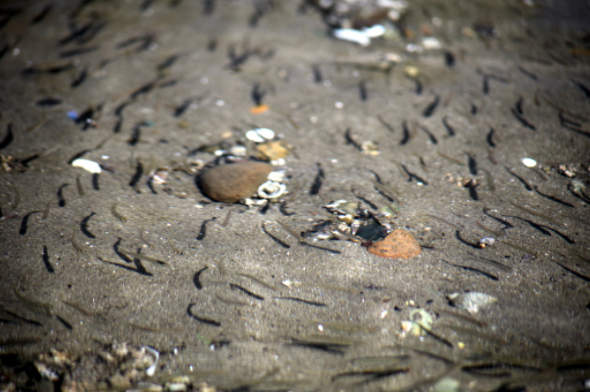It’s a hot time to be fly fishing the river mouths and estuaries of Puget Sound. The annual run of chum salmon fry from rivers and streams down to the salt water is under way, and waiting for them at river mouths and in estuaries will be a host of predators, including sea-run cutthroat trout. Small gray or mottled white streamers, size 8-10, are good bets for this “hatch,” and anglers should arm themselves with at least a 5-weight rod with floating and sink-tip lines if possible. With a little breeze and the need to throw a bit more line, you might consider a heavier 6-weight.
While fishing is important to a lot of us, there are increasingly more and more opportunities for anglers to get involved in citizen science and help monitor waters or actually help in stream and river restoration work. TU, for instance, is looking for angler scientists in the headwaters of the Shenandoah River in Virginia to monitor water temperatures in local trout waters. In Michigan, Oakland University is asking anglers to help identify waters where invasive New Zealand mud snails have become established. This little critter is particularly noxious, and it’s now present in a lot of heralded western streams like the Madison in Yellowstone National Park. One single snail—they are all female and produce asexually—can create a colony of 40 million snails in a single year. That’s biomass domination, sadly.
Finally, some great news for TU’s many beer drinkers. National beer sponsor Upslope, based in Boulder, Colo., has announced that its Imperial IPA, normally available in 19.2-ounce cans can now be had in 12-ounce four-packs. It’s a tasty, hoppy beer that’s great after a day on the water. Even better, some of the proceeds from the beer go to the TU state council where the beer is purchased. Drink up (responsibly, of course), and help TU continue to save the world, one trout at a time.
— Chris Hunt



